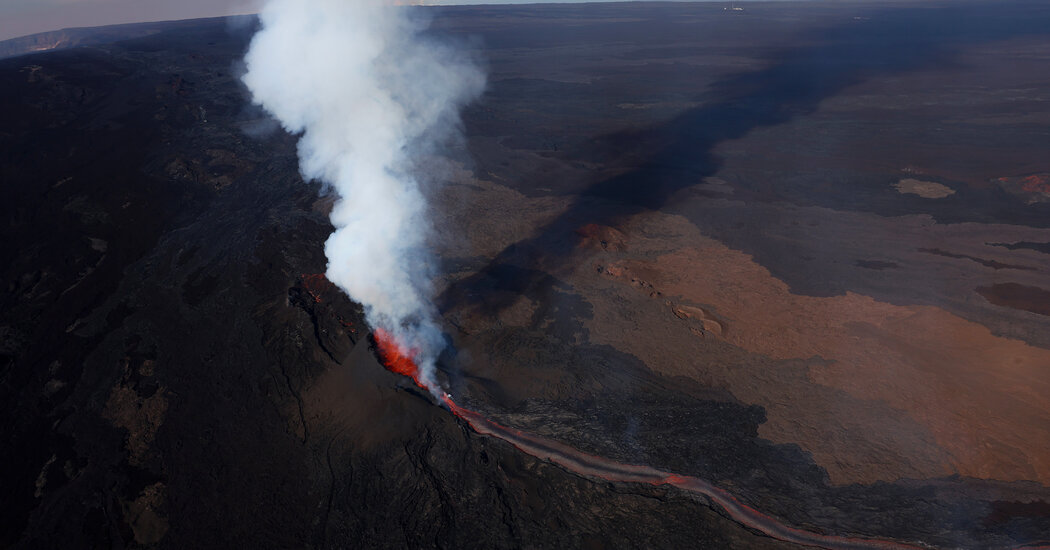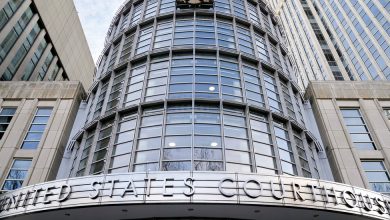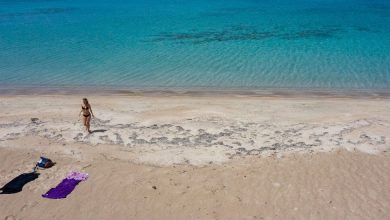
A Scramble to See Hawaii’s Eruption Reveals Fissures on the Big Island
POHAKULOA, Hawaii — When lava began spewing from the world’s largest active volcano late last month, for the first time since 1984, a surge of tourism followed. As the night sky above Mauna Loa lit up with orange hues, hotels across the Big Island of Hawaii were booked solid, and the National Guard was activated to manage traffic as spectators crowded the road near the volcano, hoping for a glimpse.
The slow-moving lava flow, which scientists said on Thursday morning had been significantly reduced, shut down a critical atmospheric monitoring station and threatened to advance across the island’s main highway, snarling traffic while burying parts of a large Army training area and spewing potentially hazardous smoke and ash.
But with no immediate threat to homes or livelihoods, the primary reaction in many quarters to the rare eruption has been excitement — and a desire to get a look. “I’ve never been this close to an active volcano,” said Brandon Gaubert, an audio engineer from New Orleans.
Many Native Hawaiians, who account for about 13 percent of the Big Island’s 203,000 residents, share the excitement, but for a different reason: Eruptions, and the cycle of destruction and rebirth they bring, are an integral part of their history and beliefs.
“Our culture isn’t just about tiki torches and this fake tourist culture that’s been promoted for decades,” said ku’ualoha ho’omanawanui, a Native Hawaiian scholar who has written widely on island deities such as Pele, the goddess of volcanoes and fire.

An offering at the Gilbert Kahele National Recreation Area near Hilo, Hawaii. Volcanic eruptions are an integral part of the culture of Native Hawaiians. Credit…Ronit Fahl for The New York Times
Some also hope that the eruption, which the U.S. Geological Survey said was continuing despite the reduction in lava flow, might help efforts to fight what they see as infringements on their sovereignty and way of life. Those include the Army training site in the lava’s path, as well as plans for a telescope on another sacred volcano, Mauna Kea, which many Native Hawaiians oppose.
Understand the Eruption of Mauna Loa
The world’s largest active volcano, located on the Big Island of Hawaii, erupted for the first time in 38 years on Nov. 27.
- A Rare Glimpse: For scientists who are eager to unlock Mauna Loa’s many mysteries, the eruption offers a unique opportunity.
- Keeling Curve on Pause: The eruption has interrupted a long-running measurement that many scientists say is the most important evidence that the climate is changing because of human activity.
- A New Playbook: The 2018 eruption of Kilauea, Mauna Loa’s neighbor, helped scientists and responders find novel ways to confront and counter volcanic emergencies.
- From the Archives: Read our 1984 report from the last time Mauna Loa erupted.
Ms. ho’omanawanui, who does not use capital letters in her name, said the activity from Mauna Loa served as a reminder that eruptions have the capacity to literally reshape Hawaii, depending on how the lava flows: “She’s gonna go where she’s gonna go.”
So far, the lava is in no hurry. On Thursday, it had stalled out about 1.7 miles from Daniel K. Inouye Highway, which thousands of people use daily to traverse the island. But though the threat appeared greatly reduced for the moment, the fascination over the rare eruption has provided a major boost to the tourism industry’s resurgence after a pandemic lull.
So many people have already rushed to the Big Island — Hawaii’s largest, by far, in land mass and its second-largest in population — that authorities have needed the National Guard to manage traffic on a stretch of road in the Pohakuloa Training Area. Normally used by the U.S. Army for live-fire exercises, its parking area provides a place where people can gaze at the eruption in the distance.
The drizzle-shrouded spot stands about 6,300 feet above sea level. Over the weekend, a middle school teacher, Kahealani David, 41, and her 12-year-old daughter, Vaihere, brought bird of paradise flowers as an offering to leave on the cooled lava from previous eruptions.
“We had to be here for this,” Ms. David said, emphasizing how important it was to her to see the eruption of Mauna Loa while the summit of nearby Mauna Kea, a dormant shield volcano, was blanketed in snow. Ms. David said that Pele, the volcano deity, and her sister, Poliahu, the goddess of snow, were talking to one another as the eruption unfolded.
“This is part of our ongoing education,” she said, referring to herself and her daughter.
Kānaka Maoli, as many Native Hawaiians such as Ms. David call themselves, account for about 10 percent of Hawaii’s 1.4 million people, though that number rises to more than 20 percent if those who are part Hawaiian are included.
Outsiders often view the state as a tropical bastion of laid-back living. But beyond that image, ethnic tensions simmer, rooted in a population collapse after Europeans and mainland Americans first arrived in the archipelago, followed by the overthrow of the Hawaiian Kingdom in 1893 and the annexation of Hawaii by the United States five years later.
Some Native Hawaiians oppose what they see as further exploitation of their sacred places, including volcanoes. A series of protests against the $1.4 billion Thirty Meter Telescope to be built atop Mauna Kea has delayed the ambitious project, which could provide scientists with a new window into the universe.
Even viewing volcanic eruptions can be a source of conflict. Since the eruption started, officers with Hawaii’s Division of Conservation and Resources Enforcement have found at least a dozen people trespassing on foot in the Mauna Loa Forest Reserve, near the active lava zone. On Sunday, another trespasser walking on dried lava in the military training area found unexploded ordnance, forcing the site to be shut down for several hours.
Some Native Hawaiians question the measures that some outsiders will take to get pictures of lava, while also chafing at what they view as an oversimplification of their Hawaiian beliefs. For some Kānaka Maoli with genealogical ties to the volcano goddess Pele as a deified ancestor, an eruption is something to be accepted, possibly even celebrated.
“People here say, ‘I’ve cleaned my house, prepared everything to welcome her,’” said Ms. ho’omanawanui, the scholar of Hawaiian folklore and mythology. “This is her land. She can take it.”
The tourism industry, a pillar of the state’s economy, is perhaps the largest ongoing source of tension. It drew some 250,000 visitors to the islands — more than the Big Island’s population — on any given day in 2019, according to state officials. It also drives up the cost and difficulty of living for many residents. When visitor numbers plummeted during the pandemic, many residents said they were stunned by the ensuing changes, including less pressure on essential services like trash collection.
“We had one deep breath of air,” said Kaniela Ing, a former state legislator and the founder of Our Hawaii, a group pressing politicians not to accept donations from developers of large tourism projects. “Now, we’re drowning again.”
Supporters of the tourism industry view the eruption through a different lens. “With any kind of natural disaster, it’s always good to look for the silver linings,” said Ilihia Gionson, a spokesman for the Hawaii Tourism Authority. “Volcanic eruptions provide a reason for folks to come visit, whether that’s from afar or just from another island.”
Still, Mr. Gionson, who is Native Hawaiian and from the Big Island, noted that the tourism authority was pivoting away from an effort to attract ever more visitors and instead beginning to promote more sustainable forms of tourism. That shift, he said, involves educating visitors about what behaviors are not acceptable.
“One of the foundational ones is that an invitation should be made to explore a space,” Mr. Gionson said. “And if there isn’t an apparent invitation, you shouldn’t go there.”
For those just seeking a glimpse of the eruption, the tensions can be hard to grasp.
“This is a gift, being able to see this with my children,” said Javier Durán, 41, an immigrant from the Mexican state of Nayarit who works for a landscaping company on the Big Island. Sitting in his Dodge pickup with his son and daughter, he added, “This is something for them to remember the rest of their lives.”
Sharde Freitas, a lawyer and hula practitioner who visited the viewing site with her five children, said it would be fine with her if the lava overran parts of the Army training area, which sprawls over 133,000 acres — roughly the size of Guam — and has emerged as a target of ire for activists, who view it as a desecration of lands seized by the U.S. government in the 1890s.
“That would show a higher power taking over,” said Ms. Freitas, 36. “This place, like our lands statewide and across the Pacific even, should not serve as target practice,” she added, referring to sites around the Pacific that have been blasted with napalm, nuclear bombs and other weapons.
Others gathered at the viewing site expressed different concerns, eying the possibility that the eruption could cut through the island’s main highway.
“Our only Costco is on the other side of the island,” said Brad Simone, 60, a home builder who moved from California three decades ago. “That sounds like a minor thing elsewhere,” he added, “but it’s big deal on this island.”




